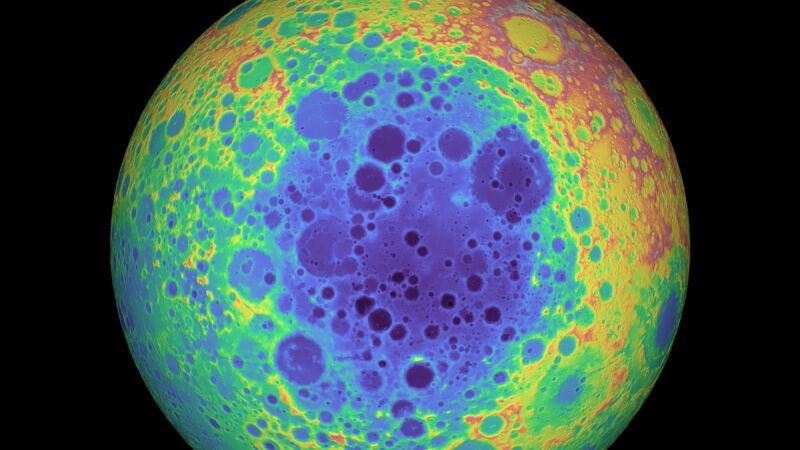As the Moon coalesced from the debris of an impact early in the Solar System's history, the steady stream of orbital impacts is thought to have formed a magma ocean, leaving the body liquid. That should have allowed its components to mix evenly, creating a roughly uniform body. But with the onset of space exploration, we were finally able to get our first good look at the far side of the Moon.
It turned out to look quite different from the side we were familiar with, with very little in the way of the dark regions, called mare, that dominate the side facing Earth. These differences are also reflected in the chemical composition of the rocks on the different sides. If the whole Moon was once a well-mixed blob of magma, how did it end up with such a major difference between two of its faces? A new study links this difference to the Moon's largest impact crater.
A big crash
The South Pole-Aitken Basin is one of the largest impact craters in the Solar System, but again, we didn't realize it was there until after we put a craft in orbit around the Moon. All we can see from Earth are some of the ridges that are part of the outer crater wall. Most of the 2,500 kilometers of the crater itself extend into the far side of the Moon.
Clearly, the crater formed after the magma ocean period, based on the fact that its features solidified after the impact. But it's also very old, and it could have formed prior to many of the volcanic features we can see on the near side. Intriguingly, the largest concentration of volcanic mare are found in the north of the near side—roughly on the opposite side of the Moon from the impact itself. Could they be related?
It's clear that an impact of this size could have generated a lot of heat within the Moon and potentially influenced or even restarted convection of the materials there. But it's far less clear that this would have produced volcanism so far from the site of impact.
To understand the situation better, a team of Chinese researchers built a model of the Moon's interior. This model combined software that could simulate the impact with models of the Moon's interior that could take into account the heating and additional material of the impact and the gravitational influence of the nearby Earth.
A big churn
As expected, the model shows that the heat derived from the impact does indeed restart convection within the interior of the Moon. But it doesn't restart evenly. That's because the body that created the crater also injects a lot of material into the interior of the Moon, and that material gradually spreads out from the site of impact in all directions. For a large portion of the Moon's interior, this disrupts organized convection.
This organized convection is what allows warmer, deep material to make its way to the surface and draws cooler material from the surface to the interior. The net result is that warm, deep material only makes its way closer to the surface on the side opposite the impact crater. On the Moon, this material also contains higher concentrations of radioactive isotopes, which will keep it warm for much longer, powering the extended period of volcanism that created the mare.
Not every impact will produce this sort of effect. If the angle of an impact is too shallow, the spread of material isn't wide enough to create a large asymmetry. And the details of the asymmetry are sensitive to the size of the impactor and the viscosity of the material it injects into the lunar interior.
Obviously, this sort of complicated mechanism requires a lot of things to go right, so researchers will probably want to recheck this work with independent convection models. And the authors of the study suggest that looking at the rocks near the Chang'e-5 landing site on the northern part of the near side may give us a greater sense of the composition of the materials that erupted there.
But as the authors note, there are several competing models to explain the asymmetry, so we'll have to wait for scientists to compare the models to see if there are any obvious differences in what they produce. And then we'll have to see if we can reasonably expect to get any relevant evidence from the Moon.
Nature Geoscience, 2022. DOI: 10.1038/s41561-021-00872-4 (About DOIs).



3175x175(CURRENT).thumb.jpg.b05acc060982b36f5891ba728e6d953c.jpg)

Recommended Comments
There are no comments to display.
Join the conversation
You can post now and register later. If you have an account, sign in now to post with your account.
Note: Your post will require moderator approval before it will be visible.